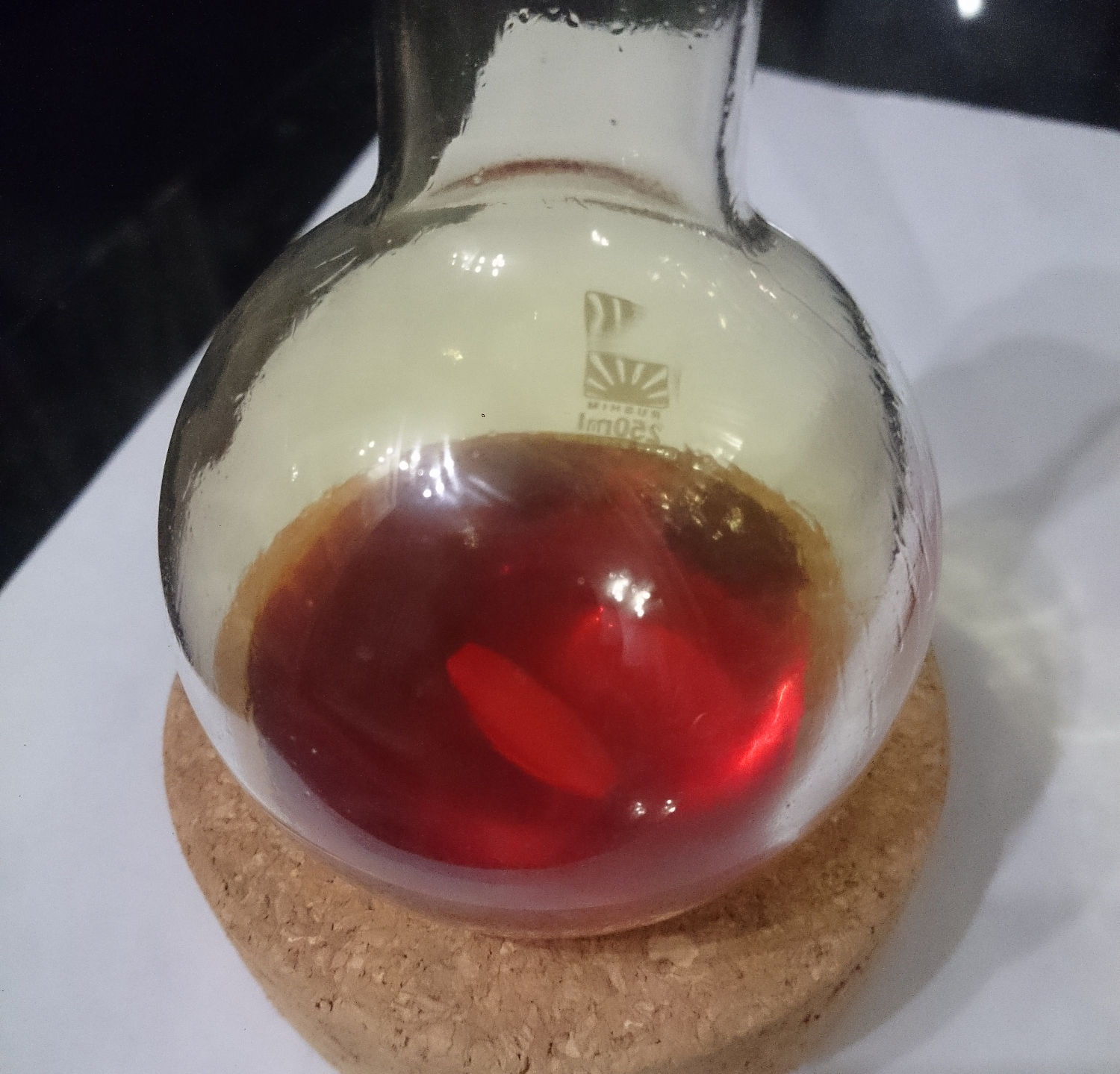Synthesizing sulfur(II) chloride, attempt 3
Tags:In this note I’ll describe my third, successful, attempt the synthesis of sulfur dichloride.
- Glassware and equipment
- Chemicals
- Apparatus
- Overview
- Results
- Observations
- Improvements
- Acknowledgements
Glassware and equipment
Chlorine generator
- 29/32 500ml Büchner flask
- 29/32 stopper
- 2× D=6mm L=500mm PVC hose
- magnetic stirrer with hot plate
- gas washing bottle
Reactor
- 29/32 250ml round-bottom flask
- 19/26-29/32 hose adapter
- 24mm rubber stopper with d=5mm hole
- 200mm D=5mm glass tube
- magnetic stirrer with heating mantle
- D=6mm L=500mm PVC hose
- gas washing bottle
Chemicals
- manganese(IV) oxide
- 38% hydrochloric acid
- 98% sulfuric acid
- sulfur
- sodium hydrocarbonate
- hexane
- carbon dioxide
Apparatus
Overview
See previous note.
The ground glass joint of the gas washing bottle with sulfuric acid was greased with the same acid.
In the reaction were used:
- ~8 g of sulfur
- 60 ml of hexane
- excess of hydrochloric acid and manganese(IV) oxide
At 100% yield, this reaction should result in ~34 g of pure sulfur dichloride.
Results
Regarding improvements from the previous attempt:
- Dessicating chlorine with sulfuric acid works very well. No evolution of gas was observed from the mass of sulfur in the reactor.
- A larger stir bar does help, but most importantly, hexane should be added to the reactor first, sulfur second, and stirring should never stop. It is not clear if this will work with more sulfur.
This attempt was a success. A cherry-red liquid, solution of $\ce{SCl2}$ in hexane, was obtained:

Purification is left to future work.
Observations
- Wrapping the gas washing bottle joint with Parafilm is not enough to prevent leakage.
- The ideal operating condition for this apparatus is intense bubbling in the $\ce{H2SO_4}$ gas washing bottle and no or almost no bubbling in $\ce{NaHSO_4}$ gas washing bottle. Anything else means a leak, a failure of chlorine generator, or a mixing failure in the reactor.
- It looks like while there is still any sulfur powder left, the lower end chlorine inlet tube must be submerged under the surface of hexane, or chlorine will not be absorbed sufficiently rapidly. (This corresponds to stirring at 300 rpm.) However, once there is only $\ce{S2Cl2}$ left, the faster the solution is agitated, the better, and whether the tube is submerged or not, doesn’t matter. (This was done at 600 rpm.)
- The manganese(IV) oxide chlorine generator is one of the mildest cheap ones, but it needs to be heated to around 80 °C or most of the reagents will just sit there unreacted. Curiously, this also makes the flask significantly easier to clean up.
- By the end of the process, sulfur dichloride appeared to chlorinate the PVC hose leading to the gas washing bottle with $\ce{NaHCO_3}$. It has gained a green color much more intense than the hoses exposed to chlorine alone.
- The progress of the reaction can be monitored by its temperature. The mixture is slightly warm while it still absorbs chlorine rapidly.
Improvements
- Seriously, do something about siphoning. This is a pain in the ass.
Acknowledgements
- @peroxycarbonate for suggesting the use of hexane as a nontoxic alternative to chlorinated solvents.